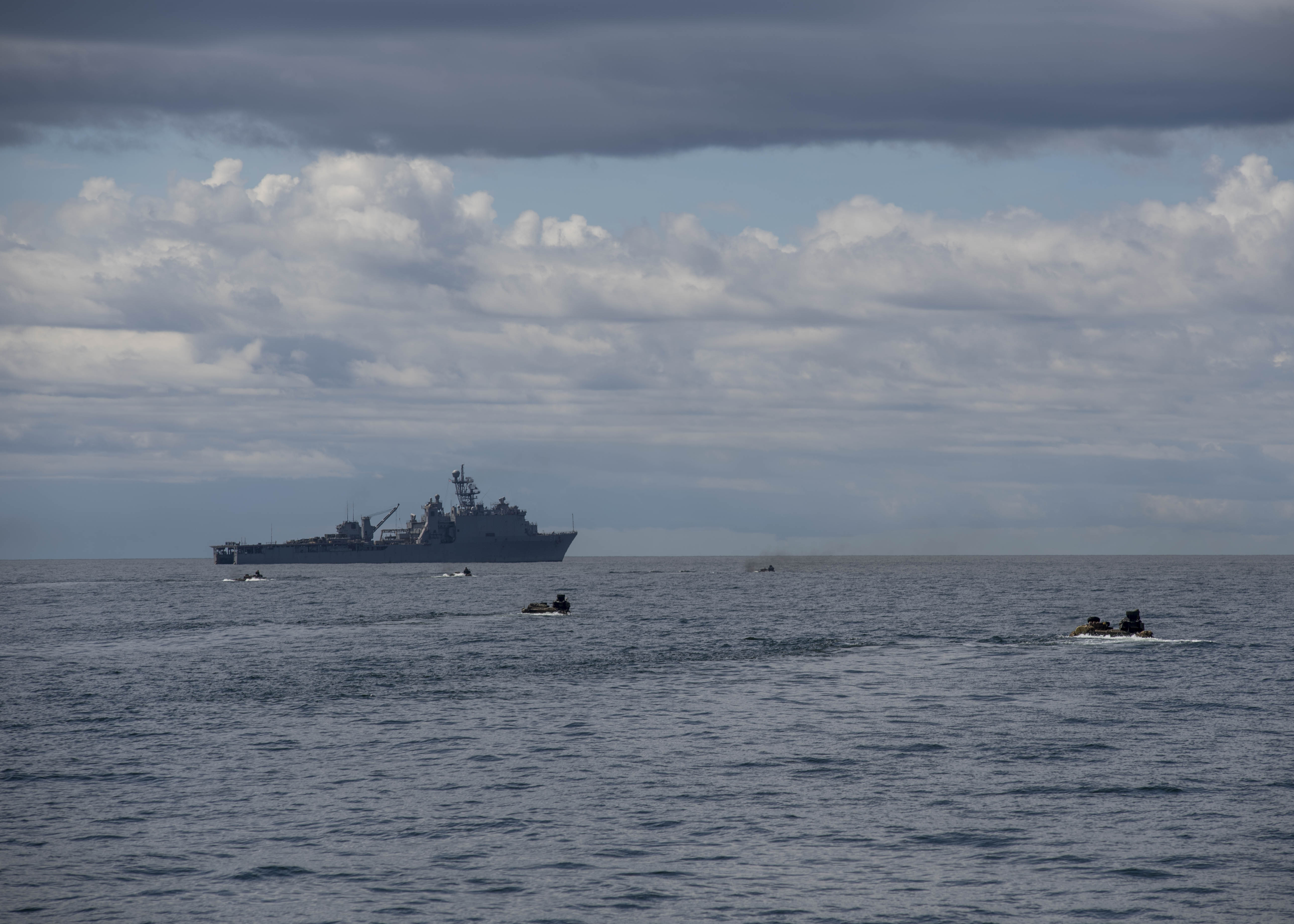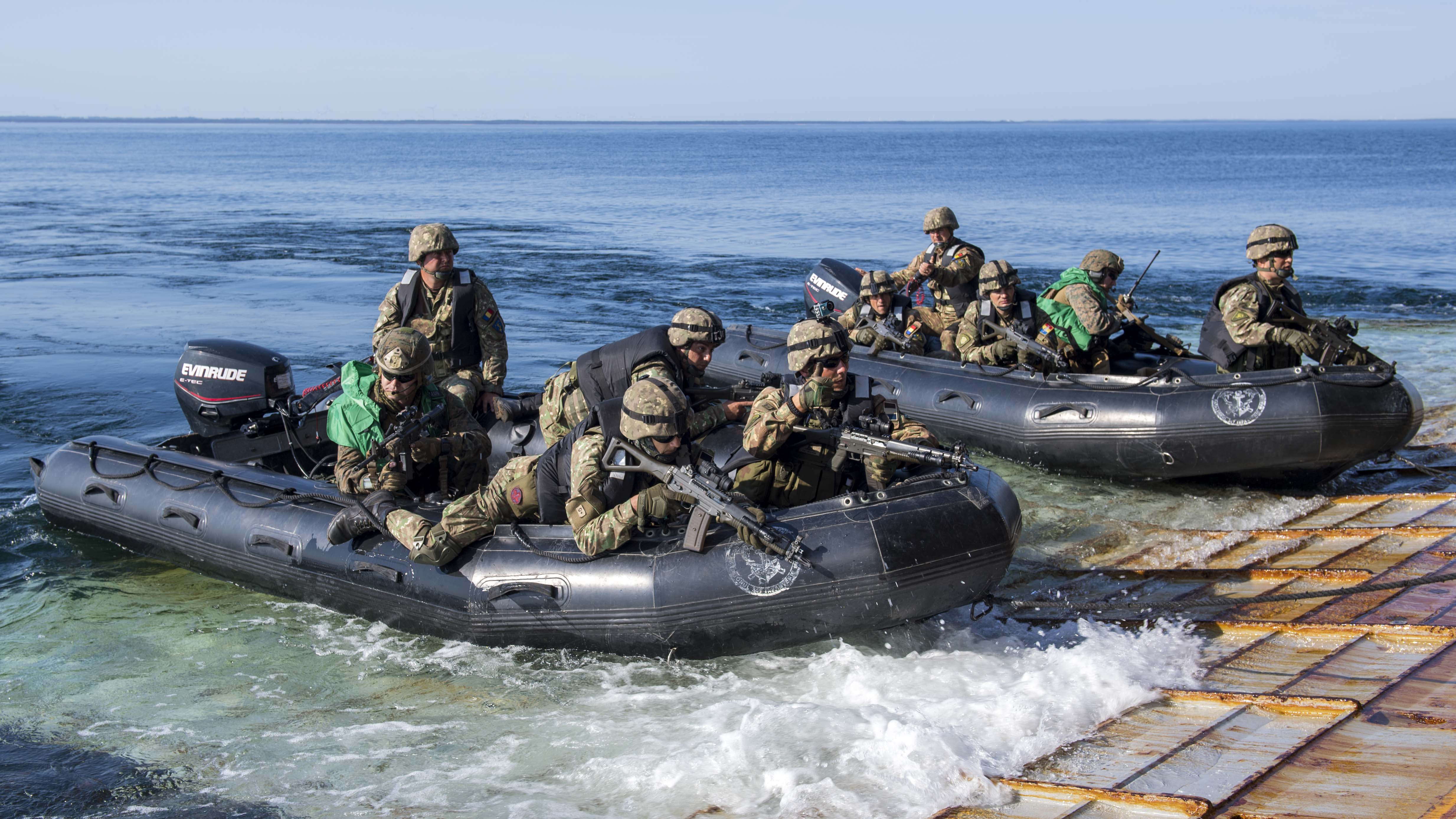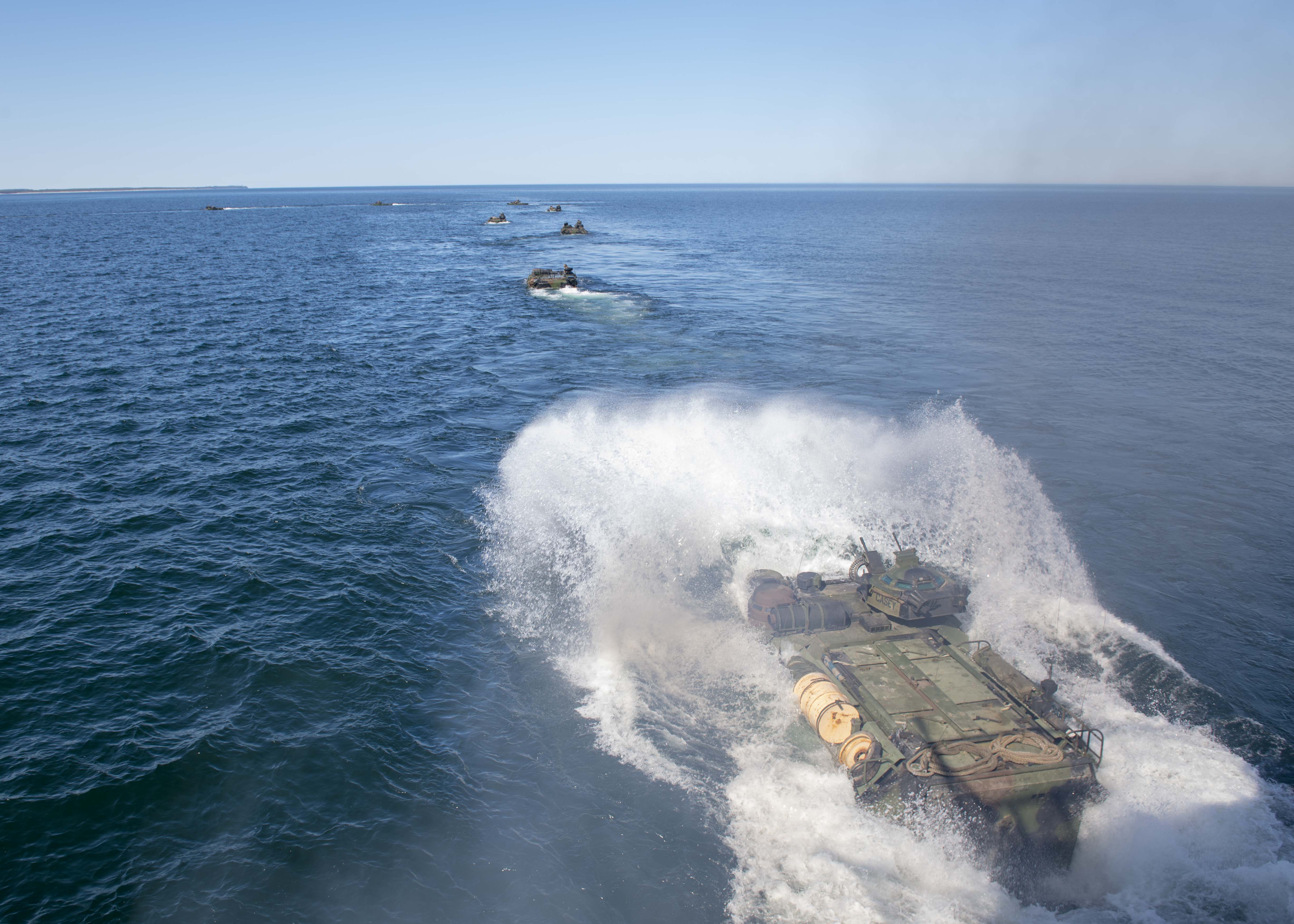
The Iwo Jima Amphibious Ready Group and 26th Marine Expeditionary Unit’s recent participation in the Baltic Operations (BALTOPS) 2018 exercise helped prove that the ARG/MEU team can handle the dynamic force employment model Pentagon leaders have been pushing in recent months.
As dock landing ship USS Oak Hill (LSD-51) led the landing force in BALTOPS, amphibious transport dock USS New York (LPD-21) was in the Mediterranean Sea and amphibious assault ship USS Iwo Jima (LHD-7) transited the Gulf of Aden and into the Persian Gulf – spreading from the heart of U.S. 5th Fleet to the high northern seas of U.S. 6th Fleet. Since the release of the new National Defense Strategy in January, the Pentagon has made clear it wants ship deployments to be less predictable, and the Iwo Jima ARG/26th MEU’s current geographical spread certainly supports that.
Maj. Joseph Murphy, the MEU’s landing force commander aboard Oak Hill, told USNI News in a June 13 phone interview that his Marines got to work with Romanian, Lithuanian and Polish ground forces and German and Spanish aircraft, among others, during BALTOPS. Events included small-arms training ashore, sending the tank platoon to the Ustka Range Complex in Poland – a rare opportunity for the tank platoons during deployment – conducting amphibious landings with the Romanian Marines, and participating in a new personnel recovery exercise at BALTOPS to practice finding and rescuing a downed pilot in the water.
Speaking of the 307th Naval Infantry Battalion, Murphy said, “we worked with this Romanian unit previously during Exercise Spring Storm in March in Romania while we were in the Black Sea, so it was good to have them this time aboard, so they were on our turf this time. Same guys, same platoon commanders. … From my level on down, we were paired up with them for planning and execution.”
Murphy said the two nations’ Marines went ashore together in American amphibious assault vehicles, and the Romanians brought their Zodiac combat rubber raiding craft for small boat reconnaissance and operations from the amphib.
“They definitely want to establish themselves as a unit that’s capable of inserting themselves into amphibious operations for NATO,” Murphy said.

Compared to the March exercise with the Romanian Marines in the Black Sea, Murphy said BALTOPS involved more complex exercises – fire team maneuvers and movement drills at the live fire ranges, instead of basic shooting exercises, for example.
“The Marines really took to that and enjoyed, especially getting to work with them and seeing the impact of working together twice now and how you can see progression in skillsets,” he said.
If a real-world event were to require Marines to pair up with their Romanian counterparts, or any other partner from BALTOPS, “the growing pains we experienced for the first few hours of the first day or so of the exercise with everyone coming together, now we know what that is. And to be able to anticipate and get through it quickly, that will facilitate a more rapid tempo for operations,” Murphy said.
Additionally, BALTOPS stretched the U.S. Marines by allowing them to practice amphibious landings in a new location – compared to Camp Lejeune, where the Marines practice the same landings on the same beaches, with relatively consistent weather and sea conditions.
“The inherent value in doing amphibious ops in a foreign location is, unlike Camp Lejeune let’s say, you’re not familiar with the coastline, the hydrographics, where your launch point is going to be because it’s always the same as it’s been for years. And it really works the Navy/Marine team aboard the ship because all that planning must occur as far as how the ship is navigating into position, what are the weather impacts and factors of how that ties into your assessment of whether to launch or not. Since we had the Romanians we also had to account for what was the Zodiac launch point, what was the AAV launch point,” Murphy said.
“The opportunity to do it in a different location and actually have to do all the thorough and detailed planning that you don’t necessarily have to do back home in the normal training area was invaluable.”

For 26th MEU Commanding Officer Col. Farrell Sullivan, embarked on Iwo Jima, being able to use the ARG/MEU to build proficiency with so many partners in so many parts of the world during one deployment is also invaluable. While Oak Hill was involved with BALTOPS, Iwo Jima has been involved in exercises such as Eager Lion 2018 with Jordanian forces.
“Nowadays, with the amount of exercises we conducted with partners and allies in really all the theaters we’re operating in currently, as well as the development within NATO over a long period of time of common tactics, techniques and procedures, common doctrine, in some cases common equipment – and certainly interoperable equipment – you find that we speak the same language in that regard, much more so than a different language. But every country we work with is different, so you have to set the starting point in a different place,” Sullivan said during the same phone interview. Though he said each exercise is a “relatively brief interlude,” it allows the starting point for the next exercise or real-world operation to be that much more advanced.
As for the distributed nature of his MEU, Sullivan said this is his third MEU deployment and all of them have involved disaggregating the ships and Marine force – though he admitted none have included stretching up to Northern Europe and that he is “living vicariously through Maj. Murphy.”
“What we call it today is distributed employment or distributed operations, and that seems to be more the norm now than it was in the past,” Sullivan said.
“We pay very close attention to what’s going on in all the theaters we could operate in, from a potential threat perspective. And then we organize or lay down onboard the ships in terms of where we put key leaders, where we put our capabilities and where we put our units to best operate in a distributed environment. While we are spread out – it’s been very dynamic – we train this way all throughout our pre-deployment training period. I do think there’s some history here, so it has not had any … impact on our ability to meet our mission. I think we’re well poised, probably the most versatile being employed in this configuration.”
Tying back to the National Defense Strategy, Sullivan said, “there’s reemerging great power competition that I think we see, and it just reaffirms the relevancy of Navy and Marine Corps amphibious forces. I think that’s always a question that is brought up throughout history, or at least recent history, and I think that what we see today is the Navy/Marine Corps team forward-deployed on amphibious vessels has never been more relevant.”





